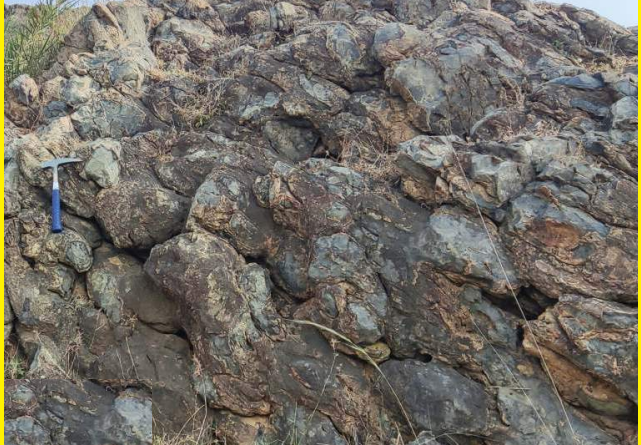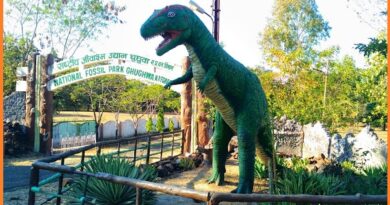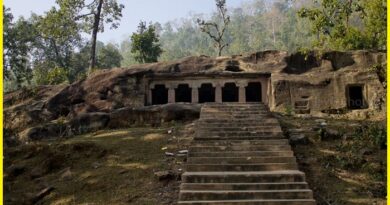A Geological Treasure-Pillow Basalt in Churi Hills, Bihar
Pillow Basalt of Churi Hills
The Churi Hills, located in the Gaya district of Bihar, India, are known for their geological significance, including the presence of basaltic formations. Basaltic rocks, including pillow basalts, are indicative of volcanic activity in the region’s geological past. The presence of Pillow Basalt of Churi Hills suggests that volcanic activity once took place in the region, possibly millions of years ago. These formations provide valuable insights into the geological history and evolution of the area.
Geologists and researchers often study such formations to understand past tectonic processes, volcanic activity, and the ancient environmental conditions of the region. The presence of Pillow Basalt of Churi Hills underscores the dynamic geological processes that have shaped the landscape of Bihar over millions of years.
Geology
Pillow basalt of Mesoproterozoic age (1,600 to 1,000 million years ago), which indicates that submarine volcanism, occurs in Churi Hills, Paranpur, Gaya, Bihar. The pillows are either spherical or elliptical and are deformed. The pillow structures exhibit well-developed chilled margins, vesicles, cracks, V-up, and convex up features. Cracks are developed due to over cooling.
Also Read- The Picturesque ‘Telhar Waterfall’ in Kaimur India-Geotourism
The Bathani volcanic and volcano-sedimentary (BVS) sequence is a volcanic and volcano-sedimentary sequence, best exposed near Bathani village in Gaya district of Bihar. It is located in the northern fringe of the Chotanagpur Granite Gneiss Complex (CGGC). The volcano-sedimentary unit comprises of garnet-mica schist, rhyolite, tuff, banded iron formation (BIF) and chert bands with carbonate rocks as enclaves within the rhyolite and the differentiated volcanic sequence comprises of rhyolite, andesite, pillow basalt, massive basalt, tuff and mafic pyroclasts.

The presence of pillow basalt marks the eruption of these rocks in a subaqueous environment. Intermittent eruption of mafic and felsic magmas resulted in the formation of rhyolite, mafic pyroclasts, and tuff. Mixing and mingling of the felsic and mafic magmas resulted in the hybrid rock andesite. Granites are emplaced later, cross-cutting the volcanic sequence and are probably products of fractional crystallization of basaltic magma.
The rocks of the Bathani volcanic and volcano-sedimentary (BVS) sequence probably mark the collision of the northern and southern Indian blocks during Proterozoic period.
Pillow Basalt
The term “Pillow Basalt” refers to a type of basaltic lava rock that forms underwater, particularly in submarine volcanic eruptions. When basaltic lava erupts into water, it rapidly cools and solidifies, forming characteristic pillow-shaped structures. These structures are a result of the lava quickly cooling as it interacts with the surrounding water, which inhibits the formation of cracks and allows for the lava to take on a rounded, pillow-like appearance.
Paranpur
Paranpur village is located in Paraiya subdivision of Gaya district in Bihar. It is situated 6km away from sub-district headquarter Paraiya and 16km away from district headquarter Gaya.



